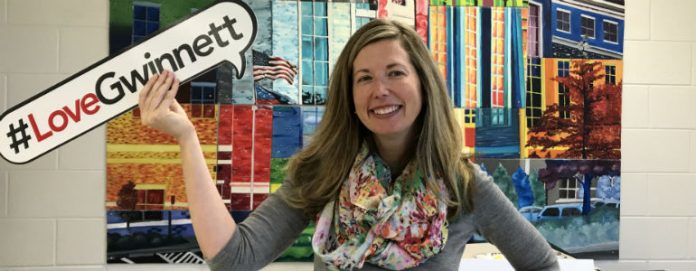Dr. Lauren Phillips is the Gwinnett School of Science, Math and Technology’s (GSMST) new art teacher! It is also her first year teaching high school art. For the past eighteen years, Dr. Phillips has been teaching art at elementary schools. She taught at Norcross Elementary for eleven years and at Nesbit Elementary for seven years.
Dr. Phillips has loved art ever since she was a child. In high school, she worked as a babysitter and constantly did crafts with the children she babysat. She has also always wanted to be a teacher. Although Dr. Phillips was a shy child, she loved helping others and being of service to others, so she decided to take on the noble profession of teaching.
Dr. Phillips graduated from the University of Georgia with a BSEd (Bachelor of Science in Education) and a MAEd (Master of Arts in Education) and received her PhD (Doctor of Philosophy) from Georgia State University. She believes art is an important subject because it informs many other disciplines.
“We live in a visual world and the arts help people navigate our world,” she says, “every job needs creativity and problem-solving skills. The arts provide those skills.”
Dr. Phillips’ class is very fun and engaging. Art is a hands-on and expressive course. It help build a student’s own artistic style through creative and challenging assignments, and that is exactly how Dr. Phillips approaches art. Instead of walking her students through the assignments step-by-step, she gives them a vague topic and constraints and allows them to create their art however they want, as long as it meets the size requirements. This approach to teaching makes Dr. Phillips stand out among other teachers.
Dr. Phillips is really enjoying her first year at GSMST. She says the best part of teaching at GSMST is the “students, staff, and supportive environment.” She loves working with a wide variety of students and learning from them as well.
However, everything comes with a price, and she describes the price of teaching as a lot of extra work that doesn’t have to do with teaching. She explains how she is evaluated by the same standards as a classroom teacher, but she doesn’t teach the same way they do. Art is a studio class, a hands-on class, not a lecture class. She also doesn’t like how many students undervalue art and don’t care about it as much as they would care about their math or history class, but she’s happy she is “now at a school where the bureaucracy is minimized, and the arts are valued.”





